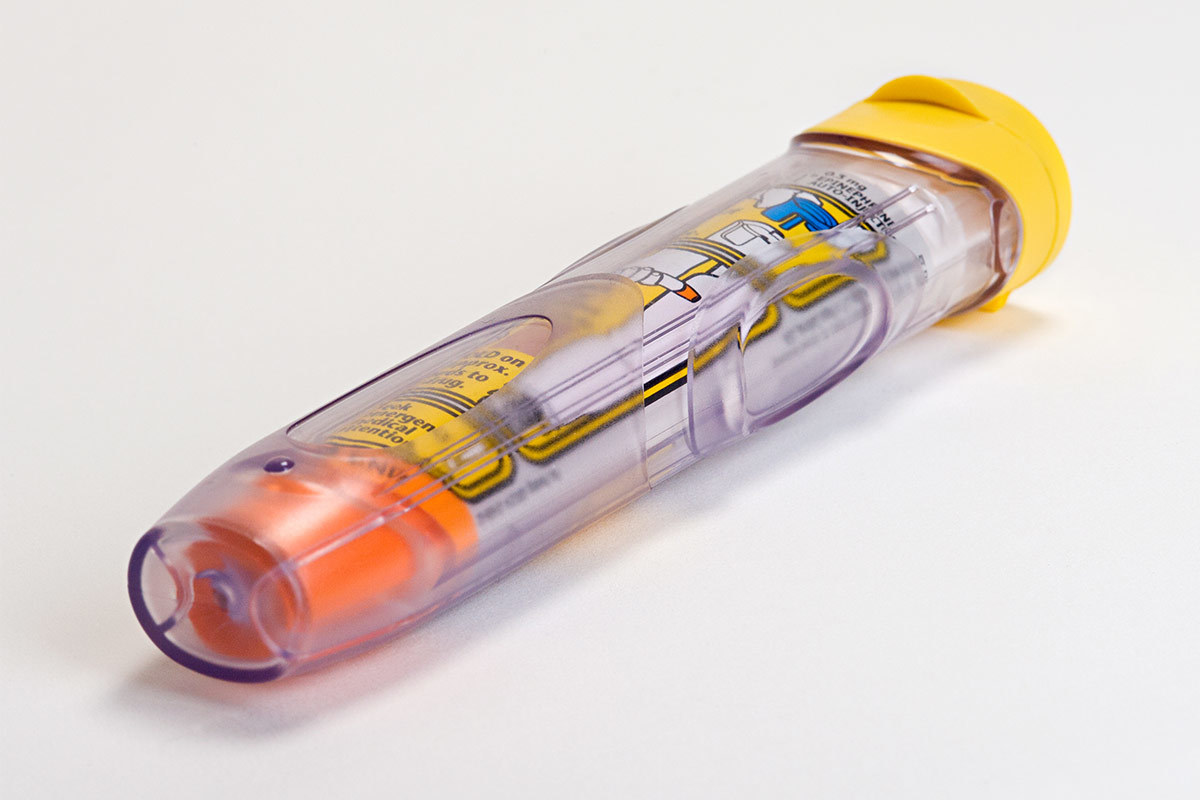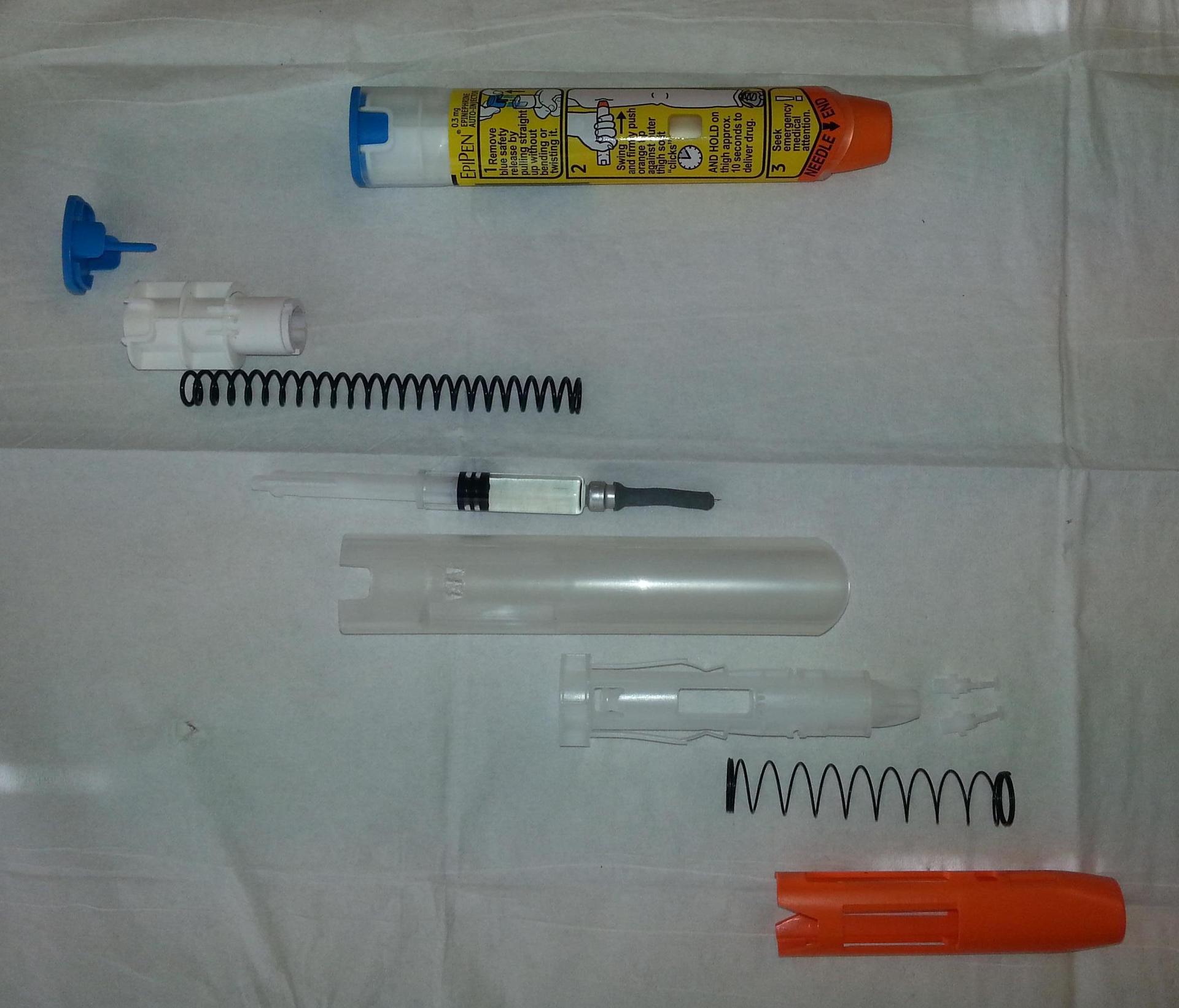The rightholder sharply raised the price of the vital EpiPen device. Will 3D printing help?

EpiPen syringe in a case
The pharmaceutical company Mylan squeezes the maximum profit out of a patented drug that is vital for people suffering from severe allergies. We are talking about the EpiPen syringe tube (EpiPen) with epinephrine (adrenaline) - a solution for emergency intramuscular injections in the event that a person has anaphylactic shock. The sharp increase in prices has led to the fact that now not every parent can buy a saving syringe for a child by sending him to school.
When the EpiPen hit the market in 2007, pharmacies paid less than $ 100 for a set of two syringes. Since then, the price has steadily increased. In 2009, it increased to $ 103.50 (already at that time, citizens began to complain about the inability to buy a syringe at such a high price. But in July 2013, the price rose to $ 264.50. In May 2015 - to $ 461. It turned out that this was not The limit. Having become convinced of the inelasticity of demand, in May 2016 the company raised the price for pharmacies to $ 608.61. For the end customer, the price of a plastic syringe will be at least $ 640.
Doctors recommend patients to carry with them two autoinjectors with EpiPen adrenaline: 0.15 mg green and 0.3 mg yellow. The second is needed just in case anaphylactic shock was extremely severe. For those who suffer from allergies to the most common foods, this is a vital medicine that should always be at hand.
')
The patented EpiPen design allows you to stick a syringe and inject the drug intramuscularly, even in a semi-conscious state. You need to grab the syringe tube, remove the blue fuse - and just stick the yellow lid with a needle in your leg or hand. The needle will automatically come out of the cap and enter the body, and adrenaline is injected into the muscle.

The design of the syringe tube EpiPen
The manufacturer is well aware of the exceptional importance of his medicine. Probably, previous price increases showed that the demand for medicine did not fall (that is, demand is inelastic and does not depend on price). It is possible that demand has even increased. For reasons unknown to science, in recent years the number of people suffering from various forms of allergy has been constantly growing in the world. According to the most probable version , this is connected with the transition to hygiene standards, which prevents the body from contact with many antigens (this theory explains why children from large families are less likely to suffer from allergies than the only children in the family).
According to another theory, an increase in the number of patients with severe allergies is associated with the growing consumption of chemical products that violate the functions of the nervous and endocrine systems. However, the influence of the technogenic environment does not explain why the same factors have such an impact on some people, but not on others.
In modern humans, a fatal allergy with anaphylactic shock can occur in almost anything:
- insect bites : bee and wasp poison;
- food products : nuts, sesame, seafood, eggs, pulses, milk, cereals, citrus fruits, honey;
- medications : penicillin, sulfonamides, salicylates, local anesthetics;
- dust and dust mites;
- nickel compounds ;
- cockroaches ;
- animal scales ;
- latex .
Anaphylactic shock is an over-reaction of the immune system to an allergen, which the cells of the immune system confuse with a deadly poison that requires immediate protection.
Now with the risk of anaphylactic shock live 43 million Americans, that is, 13.5% of the US population. Every thirteenth child suffers from food allergies, and 25% of cases of anaphylactic shock are reported in people who have not previously experienced any allergies.
The syringe tube EpiPen contains adrenaline, which has adrenergic action. It acts directly on the cardiovascular system (heart and blood circulation) and the respiratory system (lungs), preventing the possible fatal effects of anaphylactic shock due to the rapid narrowing of blood vessels, relaxation of pulmonary muscles to facilitate breathing, relieve swelling and stimulate heart activity.
The design of the EpiPen is such that the injured person will have time to apply the tube if he has already had anaphylactic shock or has a diagnosed risk of its occurrence. As it turned out, such a design is extremely effective when life and death are separated for a few seconds. A person simply does not have time to fill an ordinary syringe with adrenaline from a jar. So EpiPen is the best option for people who are at constant risk of allergies.
The company Mylan said that "increasing the availability of epinephrine for people living with life-threatening allergies is the most important part of its mission." The company proudly mentions its programs to increase the availability of drugs, as a result of which almost 80% of patients with health insurance received an EpiPen for free using the My EpiPen Savings Card . That is, the cost of the drug is transferred to the insurance company, so that if there is insurance, the patient does not need to worry about the price increase.
In reality, many patients do not have insurance, and even if it is available, the availability of medication depends on the conditions in a particular state and insurance company. Therefore, many people now have to really pay $ 640 for a set of two syringes with a shelf life of 1 year (including pharmacy markups). Others will pay part of the cost, according to the terms of the insurance company.
Last year, Mylan’s only competitor, Sanofi, with a similar product, Auvi-Q, left the market in connection with a trial about the exact dosage of adrenaline in its automatic syringes. EpiPen is now the only seller of such drugs, that is, a monopolist. Perhaps this is not least influenced the decision to raise prices. By the way, one of the senators in the upper house of the American parliament, Amy Klobuchar, whose 12-year-old daughter also carries the EpiPen, has already appealed to the Senate’s legal committee to investigate the unjustified price increase.
Congress petition demanding an investigation of the price policy of Mylan was signed by 61,079 people.
The indignation of ordinary citizens is no limit. Some propose to develop a free design of a syringe-tube for printing on a 3D printer, so as not to buy this gadget with a cost price of a maximum of $ 10 for an incredible $ 640. This is a mechanism of plastic and other cheap parts, the medicine itself (adrenaline) costs a penny. Theoretically, it is easy to copy the mechanism, it is quite simple.

Most of the plastic parts of the EpiPen syringe tube can be printed on a 3D printer
The patent for the basic design of the syringe tube was issued in 1977 and has already expired, so copying that design will not be a violation of intellectual property rights. On the other hand, the company prudently received a new patent, which was issued in 2005 and is valid for 20 years.
Printing on a 3D printer is rather a call for despair, because such homemade syringes are unlikely to be certified by the Food and Drug Administration and will never go on sale. Yes, and an ordinary person, if we are talking about his life and death, is unlikely to risk buying a homemade device, which at a critical moment may work, or maybe not.
However, if you have no money and no insurance, then printing an autoinjector on a 3D printer may remain the only option. And injecting adrenaline during anaphylactic shock, you are unlikely to think about the violation of someone's intellectual rights.
Source: https://habr.com/ru/post/396929/
All Articles